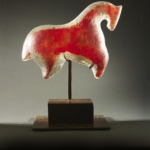Exercising and Aging

by Paula Allia PT, DHSc, MTC, OCS
Exercise is a part of life that all participate in one form or another.
Whether you like it or not, you are actually performing muscle contractions just by getting out of a chair or walking to the car.
In all forms of exercise, there are right and wrong ways to do things. In addition to the above familial tendencies and predispositions genetically do factor into everyday health.
When born into life, our body begins to mature in regards to the muscular and nervous systems. The two work together to guide our developmental milestones. For example, learning to roll over as an infant takes the development of strength in certain muscles and the mediation of some neurological reflexes in order to master what we consider such a simple task. If born with certain conditions, one may never master this task. Most do and that is a good thing.
Developmental milestones like rolling, sitting up, crawling, crossing the midline with our arm or leg, and even standing all develop as the body’s systems mature. Once our neuromuscular systems develop normally, then familial tendencies can be patterned to the next generation.
The younger can pattern their posture and habits on the older individual. This can be good if there is a good postural awareness of the adult. If not, prolonged poor positioning of the young can result in poor posture in life which leads to undo stress and strains.
Hopefully you are a lucky one with both good alignment and good posture. If posture is in good alignment (when standing) throughout the body, execution of exercises can help to maintain this posture throughout life.
There is a balance of the muscles on the front and back of the body as well as surrounding muscles to keep such a posture. This will allow coordinated strength and flexibility and allow for the ideal joint mechanics in the execution of activities such as a golf swing or tennis stroke.
Unfortunately, developing muscle balance from back to front and side to side gets challenged by everyday postures such as sitting at a desk or using a computer for many hours each day.
To maintain the ideal postures, it is suggested to undo the bad postural habits of the day and use the right muscles to open up that posture once again. This will indeed help to maintain overutilized muscle’s flexibility and allow the other muscles to not be overstretched which would weaken those muscles over time.
If the proper length tension of muscles is not maintained, various stresses are placed on the joints of the body. Some of these stresses are in the form of compression. Constant compression of a misaligned joint will cause abnormal wear and tear. This in turn will begin to break down the joint.
When people show up to a personal trainer or physical therapist, most have abnormal alignments or movement imbalances that have developed over time due to lack of correction when younger. In attempts to improve postural alignment and function more normally, some muscles need to be stretched and others strengthened.
Strengthening should not wait until tight muscles regain their flexibility. One must adapt the angle of strengthening in alignment with the joint and continue to adapt in order to strengthen without breaking down the joint. This means that the ideal position for strengthening is going to be different for everyone.
An example of this is in the shoulder. Strengthening should be done in the angle of the shoulder blade (scapula) when raising the arm. This will keep the proximal upper arm bone (humerus) in a better position in the joint to avoid compression into the scapula and thus causing joint and muscle irritation.
Become aware of body and joint positioning when exercising so that you can take an active role in obtaining results while minimizing stress to last longer and have better quality in the rest of your life!
Here’s to your health!




Leave a Reply
Want to join the discussion?Feel free to contribute!